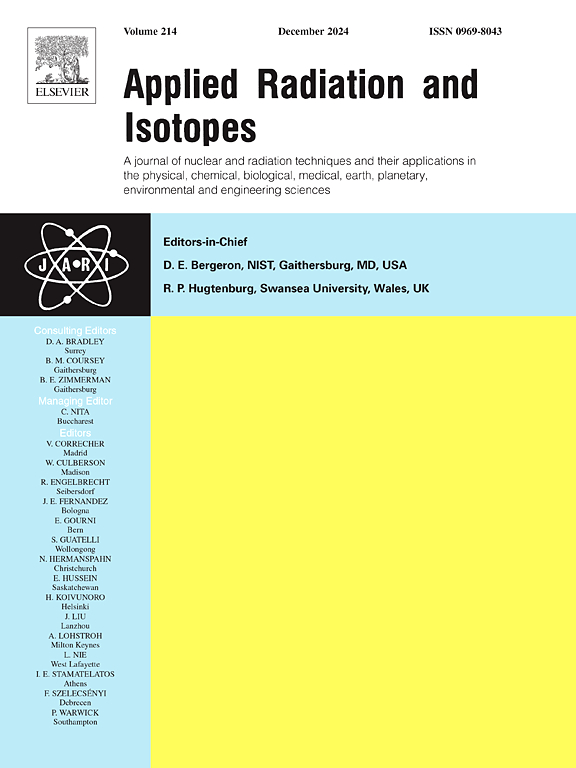硼中子俘获疗法的模型溶液系统研究
IF 1.6
3区 工程技术
Q3 CHEMISTRY, INORGANIC & NUCLEAR
引用次数: 0
摘要
本研究旨在建立适合估算硼中子俘获疗法(BNCT)剂量的模型溶液系统。由于核素 10B、6Li 和 157Gd 能够吸收热中子,因此研究了含有三种典型溶液(H3BO3、LiOH 和 Gd(NO₃)₃-6H₂O)、不同浓度和核素丰度的模型。结果表明,这三种具有适当浓度和核素丰度的幻影-溶液系统都能有效区分氮剂量和氢剂量,用于 BNCT 的剂量测量。本文章由计算机程序翻译,如有差异,请以英文原文为准。
Studies of phantom-solution systems for boron neutron capture therapy
This study aims to establish phantom-solution systems suitable for estimating doses in boron neutron capture therapy (BNCT). The phantom containing three typical solutions, H3BO3, LiOH, and Gd(NO₃)₃·6H₂O with different concentrations and nuclide abundances have been studied since the nuclides 10B, 6Li, and 157Gd are capable of absorbing thermal neutrons. The results indicate that all three phantom-solution systems, with suitable concentrations and nuclide abundances, effectively distinguish between the nitrogen dose and the hydrogen dose for dose measurement in BNCT.
求助全文
通过发布文献求助,成功后即可免费获取论文全文。
去求助
来源期刊

Applied Radiation and Isotopes
工程技术-核科学技术
CiteScore
3.00
自引率
12.50%
发文量
406
审稿时长
13.5 months
期刊介绍:
Applied Radiation and Isotopes provides a high quality medium for the publication of substantial, original and scientific and technological papers on the development and peaceful application of nuclear, radiation and radionuclide techniques in chemistry, physics, biochemistry, biology, medicine, security, engineering and in the earth, planetary and environmental sciences, all including dosimetry. Nuclear techniques are defined in the broadest sense and both experimental and theoretical papers are welcome. They include the development and use of α- and β-particles, X-rays and γ-rays, neutrons and other nuclear particles and radiations from all sources, including radionuclides, synchrotron sources, cyclotrons and reactors and from the natural environment.
The journal aims to publish papers with significance to an international audience, containing substantial novelty and scientific impact. The Editors reserve the rights to reject, with or without external review, papers that do not meet these criteria.
Papers dealing with radiation processing, i.e., where radiation is used to bring about a biological, chemical or physical change in a material, should be directed to our sister journal Radiation Physics and Chemistry.
 求助内容:
求助内容: 应助结果提醒方式:
应助结果提醒方式:


